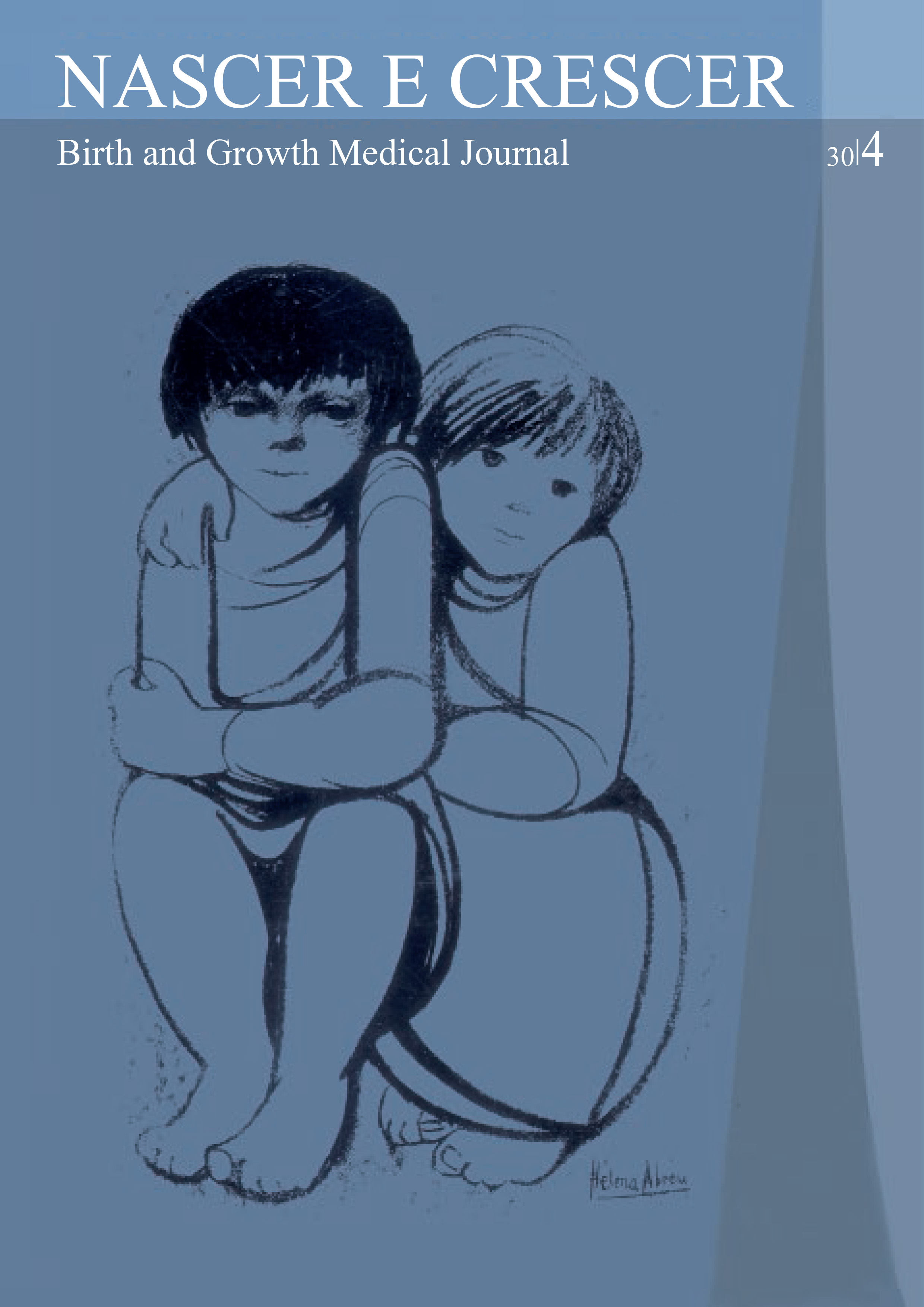Nasal obstruction in a newborn
DOI:
https://doi.org/10.25753/BirthGrowthMJ.v30.i4.20755Keywords:
bilateral congenital dacryocystocele, neonatal respiratory obstructionAbstract
Dacryocystocele is an uncommon congenital disease affecting less than 1% of newborns.
Herein is presented the case of a female newborn with respiratory distress with onset in the first hours of life and worsening during breastfeeding.
Resistance to endoscope progression due to narrowing of both patent nasal cavities was noticed during flexible nasal endoscopy, and computed tomography revealed an extremely rare case of bilateral dacryocystocele.
A conservative approach was chosen, with surveillance in the Intensive Care Unit.
Although most dacryocystocele cases resolve spontaneously in the first year of life, recognition of this rare condition (particularly in Otolaryngology and Ophthalmology clinical practice) is crucial to prevent complications.
Downloads
References
Singh S, Ali MJ. Congenital Dacryocystocele: A Major Review. Ophthalmic Plast Reconstr Surg. 2019 Jul/Aug; 35(4):309-17.
Wong RK, Vander Veen DK. Presentation and management of congenital dacryocystocele. Pediatrics. 2008;122: e1108-12.
Shekunov J, Griepentrog GJ, Diehl NN, Mohney BG. Prevalence and clinical characteristics of congenital dacryocystocele. J AAPOS 2010; 14:417-20.
Carneiro de Sousa P, Neves M, Duarte D, Azevedo P. Congenital bilateral dacryocystocele. European Annals of Otorhinolaryngology, Head and Neck diseases. 2019; 136:41-6.
Barroso F, Silva R, Mendes C. Congenital dacryocystocele in infant: A rare cause of eye swelling. Porto Biomedical Journal. 2017; 2(1):28-9.
Wodzinska E, Jonczyk-Potoczna K, Warzywoda M, Nowakowska K, Pawlak B. Congenital intranasal meningocele in a newborn – case report. Pol J Radiol 2011; 76:52-5.
Barham HP, Wudel JM, Enzenauer RW, Chan KH. Congenital nasolacrimal ductcyst/dacryocystocele: an argument for a genetic basis. Allergy Rhinol (Providence) 2012; 3:46-9.
Teixeira C, Dias R, Santos R. Dacriocisto congénito com extensão intranasal. Acta Oftam 2003; 13:13-7.
Downloads
Published
How to Cite
Issue
Section
License
Copyright (c) 2021 Tiago Lourenço Coelho, João Fonseca Neves, Ricardo Caiado, Luis Filipe Silva

This work is licensed under a Creative Commons Attribution-NonCommercial 4.0 International License.
Copyright and Authors' Rights
All articles published in Nascer e Crescer - Birth and Growth Medical Journal are Open Access and comply with the requirements of funding agencies or academic institutions. For use by third parties, Nascer e Crescer - Birth and Growth Medical Journal adheres to the terms of the Creative Commons License "Attribution - Non-Commercial Use (CC-BY-NC)".
It is the author's responsibility to obtain permission to reproduce figures, tables, etc. from other publications.
Authors must submit a Conflict of Interest statement and an Authorship Form with the submission of the article. An e-mail will be sent to the corresponding author confirming receipt of the manuscript.
Authors are permitted to make their articles available in repositories at their home institutions, provided that they always indicate where the articles were published and adhere to the terms of the Creative Commons license.


